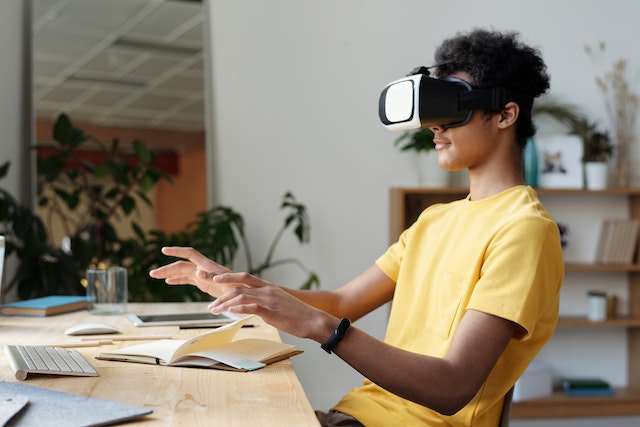
Technology keeps changing the face of chronic illness management in the healthcare industry. Subcutaneous Continuous Glucose Monitoring (S.C.G.) is one such revolutionary breakthrough that has changed the way diabetes is treated. Millions of people throughout the world suffer with diabetes, a chronic metabolic illness marked by elevated blood glucose levels that requires close monitoring and care.
Diabetes care is now a proactive and individual effort thanks to S.C.G. technology, a stunning synthesis of bioengineering and data science that delivers unparalleled real-time insight into blood glucose levels to improve patient results, quality of life, and overall treatment.
Recognizing the Importance of Constant Diabetes Monitoring
Complications from diabetes include cardiovascular disease, neuropathy, retinopathy, and renal impairment, all of which need careful treatment. Different pathways contribute to the development of Type 1 and Type 2 diabetes, the two most common types. When the pancreatic beta cells that produce insulin are destroyed by the immune system, as happens in type 1 diabetes, treatment requires daily injections of insulin. On the other hand, type 2 diabetes is characterized by insulin resistance and inadequate insulin production.
Regular fingersticks with portable glucometers were the norm for monitoring glucose levels in the past, but they provided just a snapshot of the patient’s glucose levels and frequently led to less-than-ideal glycemic management. This method lacked the specificity needed to comprehend glucose variations throughout the day, which might have resulted in missed intervention opportunities. So that people with diabetes may make educated choices regarding their insulin dose, nutrition, and exercise, S.C.G. technology collects and displays continuous glucose data in real time.
The S.C.G. Technology Revealed
Subcutaneous glucose monitoring (S.C.G.) technology is comprised of three main parts: a glucose sensor, a transmitter, and a receiver or smartphone app. Miniaturized bioengineered glucose sensors are implanted subcutaneously, most often in the belly. This sensor measures glucose levels in the interstitial fluid, which is highly correlated with blood glucose levels, using cutting-edge enzymatic or amperometric methods.
The sensor sends its readings to the transmitter, which then sends them to a receiver or a smartphone app in real time. Closed-loop algorithms, sometimes called artificial pancreas systems, are incorporated into certain devices to automatically change insulin supply in response to blood sugar levels. These closed-loop systems, which simulate the physiological feedback loop that controls glucose levels in people who don’t have diabetes, represent the pinnacle of individualized diabetes treatment.
Positive Effects and Benefits
The advent of S.C.G. technology has ushered in a new era in diabetes treatment, drastically improving the quality of life for those with diabetes. Its significance is shown by many of its benefits:
- Continuous, real-time glucose data is provided by S.C.G. technology, allowing users to monitor trends, spot patterns, and react quickly to episodes of hyperglycemia and hypoglycemia.
- S.C.G. technology helps people with diabetes maintain healthier blood sugar levels, which lowers their risk of both short- and long-term problems.
- S.C.G. devices’ detailed information allows patients to adjust their treatment plans to better suit their bodies, leading to better health results.
- Improved glucose stability, decreased frequency of hypoglycemic episodes, and fewer fingerstick measures all add up to a higher quality of life for those with diabetes.
- The burden of diabetes treatment is lessened thanks to S.C.G. technology, which helps not only patients but also their carers and medical staff.
- S.C.G. device data, if aggregated and anonymised, might revolutionize our understanding of diabetes care and treatment, as well as shape healthcare policy.
Perils and Plans for the Future
S.C.G. technology has tremendous potential, but it also has several serious drawbacks:
- The price is still a major barrier to entry, requiring insurance or government subsidies to help pay the costs for most people.
- Constant obstacles stand in the way of ensuring dependable glucose readings, such as limiting calibration efforts and ensuring sensor accuracy.
- To fully realize the potential of S.C.G. technology, it must be effectively integrated into everyday life, and patients must be provided with thorough education.
- In order to bring new S.C.G. technology to market, a balance must be struck between innovative ideas and regulatory norms.
The development of S.C.G. technology bodes well for its future. Improvements in sensor accuracy, insertion procedures, insulin delivery system integration, and closed-loop algorithms are all now under investigation. More customized and prognostic diabetes care may also be possible with the use of data from wearable devices, electronic health records, and machine learning.
Conclusion
Technology like Subcutaneous Continuous Glucose Monitoring (S.C.G. ), which combines bioengineering and data science to revolutionize diabetes care, is a tribute to human creativity. The burden of diabetes has been lightened and people have been given more agency over their health thanks to S.C.G. technology, which provides real-time information, individualized tactics, and an enhanced quality of life. The future of diabetes care is bright, with endless opportunities to improve the lives of millions across the globe as research and innovation continue to push the envelope.


